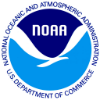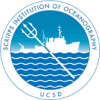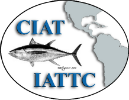Growth Workshop
The Center for the Advancement of Population Assessment Methodology (CAPAM) hosted a technical workshop on Growth: theory, estimation, and application in fishery stock assessment models in La Jolla, CA, USA from November 3-7, 2014. Sessions were attended on site by over 100 fishery researchers from around the world, as well as 20 individuals that participated online. One of those participants, Dr. Andre Punt, Director of the School of Aquatic and Fishery Sciences, University of Washington remarked:
"I consider these CAPAM workshops to be my top priority to get students working in population dynamics to attend. The stock assessment-related research that I saw over only two days exceeded what I would expect to see at AMSS or AFS."
The growth workshop is the second in a series organized by CAPAM as part of its Good Practices in Stock Assessment Modeling Program for improving fishery stock assessments. CAPAM is a collaborative effort between the Southwest Fisheries Science Center (SWFSC), the Inter-American Tropical Tuna Commission (IATTC), and Scripps Institution of Oceanography (SIO) for purposes of conducting both research and education activities to address modern stock assessment modeling issues. The workshop was sponsored by NOAA, the International Seafood Sustainability Foundation, and CAPAM.
- Biological processes/ontogenetic development of aquatic animals targeted by fisheries, including fish, crustaceans, and mollusks (Kai Lorenzen).
- Specification and estimation: growth determination from direct ageing methods as used in age-structured models (Chris Francis).
- Specification and estimation: growth determination from size increment data as used in size-structured models (Andre Punt).
- Spatial/temporal variation (Steve Martell).
- Modeling growth in stock assessments using the Stock Synthesis modeling framework (Ian Taylor). A half-day session held on Monday (November 3rd) afternoon.
- Modeling growth in tuna stock assessments (Dale Kolody). A half-day session held on Friday (November 7th) morning.



